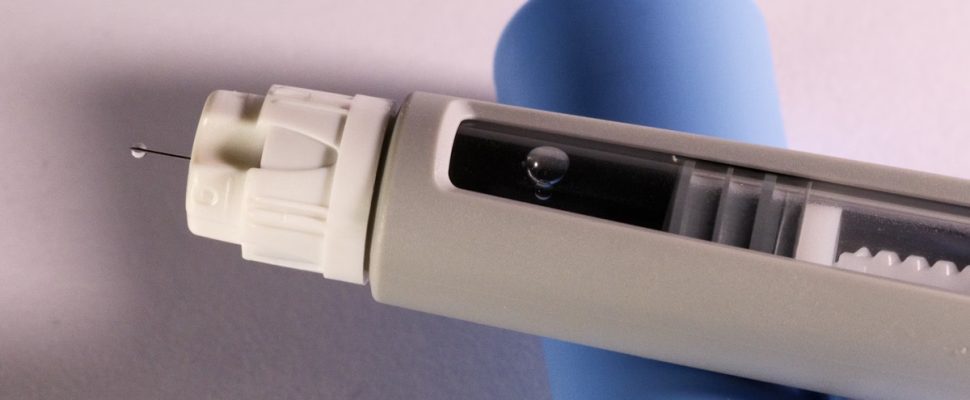As tensions rise over US-EU trade, will the weight-loss drug Ozempic become an unexpected bargaining chip? Stan Jackson explores the risks of leveraging GLP-1s in economic negotiations.
You can always tell when a blockbuster drug has entered the cultural zeitgeist. It’s around the time you start to hear the brand name not just in medical papers but in songs, TV shows and magazine columns.
Ozempic, the GLP-1 agonist made by Danish firm Novo Nordisk, has already achieved an enviable scale of public recognition. Among the many places I’ve heard it mentioned recently, perhaps the most surprising was Mean Girls: The Musical, when Gretchen brags about stealing her dad’s Ozempic to lose weight for the spring dance.
Another theatre where Ozempic plays a starring role is the unpredictable dialogue on prospective US/EU tariffs, currently casting a shadow over the European political community.
In a world where things move fast, policymakers and commentators on both sides of the Atlantic are given to hypothesising over lists of industries, companies, and products in their favour.
In the event of severe U.S. tariffs on European goods, could the steady supply of Ozempic – manufactured in Denmark but beloved by Americans – be an ace up Europe’s sleeve?
Yes, Americans need Ozempic – a cursory glance at obesity statistics will tell you as much; but Ozempic also needs America. Presently, Americans pay between $1,000–$1,300 per pack (notwithstanding insurance or discounts), and it is the American consumer, not the European, who has propelled Denmark to its position as the predominant ‘Pharma State’ of the early 2020s.
The US imported around $5.7 billion worth of pharmaceutical products from Denmark in 2023, according to the most recent annual United Nations trade data compiled by Trading Economics, a figure which is only likely to increase in 2024 and beyond.
Novo Nordisk has recently invested heavily in US-based manufacturing capabilities, but the active ingredient for Ozempic, semaglutide, will continue to be manufactured in Europe for the foreseeable future. This means that excessive tariffs on Denmark, which do not exempt pharmaceuticals, would likely drive up Ozempic prices for American patients.
This would be disastrous for the Trump administration on several fronts, especially given the fame and widespread use of Ozempic among the US political class.
Trump’s ‘Agenda47’ aims to “bring pharmaceuticals back to the country by requiring federal agencies to buy medicines and devices manufactured in the United States, as well as modifying international agreements to ensure that the US is not reliant on foreign countries for essential medicines. It also includes new incentives to encourage pharmaceutical companies to reshore manufacturing from places like Ireland, whose low corporate tax rate has made it a popular destination for biotech.
These policies are not outlandish; many European governments adopt similar strategies to attract pharma investment and reshore essential medicine production.
However, if tensions escalate, US lawmakers do have several drastic measures at their disposal. For example, compulsory licensing under the Bayh-Dole Act or the Defence Production Act in a national emergency. Utilisation of these laws would allow U.S. companies or subsidiaries to bypass Ozempic’s patent protection and fast-track domestic versions.
Is this purely hypothetical? Precedents indicate otherwise.
Trading with the Enemy
Ozempic is not the first drug to be at the centre of a trade war; in one past example, the drug in question was entangled in a real war – the First World War.
Salvarsan, a proprietary medicine originally made by Hoesch AG—which later became a subsidiary of Sanofi—was developed during the first pharma boom at the turn of the 20th century.
At that time, Germany was the de-facto superpower of medicines, known then as ‘The World’s Pharmacy,’ and the Germans moved first to enshrine full patent protection for brand-name medicines, the most famous of which was Aspirin, patented by Bayer in 1899.
By 1913, nine of the top 15 pharmaceutical companies by revenue were German[1]. In contrast, by 2025, none of the top 15 are German, while the United States dominates with eight.
German domination of the early pharmaceutical industry was largely due to the export success of German proprietary drugs like Salvarsan, Novocaine and Aspirin – up to 60 percent of the German drug business was in export. At the time, proprietary drugs in the United States were often still associated with ‘quack-remedies’, and The American Medical Association (AMA) regarded patented medicines as, by definition, unethical. “A monopolization of medical preparations through the use of patents was “to grow fat on human misery,” was the official position.
Meanwhile, the Germans had gained a competitive edge in catchy brand-name medicines, with none more popular than Salvarsan. Invented by the renowned chemist Paul Ehrlich (the father of chemotherapy), data was presented on ‘compound 606’ at the Congress for Internal Medicine in Wiesbaden, in April 1910. He called the new drug Salvarsan, deriving from the word ‘salvation’ – given that the treatment was used to overcome that most insidious of 19th century diseases – syphilis.
During the First World War, the mixing of soldiers with civilian populations in Europe led to a surge in syphilis cases. Salvarsan was desperately in need. First the British and the French, and later the Americans who joined the war in 1917, realised that the international patent system for medicines was creating supply barriers for their populations to gain access to this critical therapy.
Speaking in the British Parliament in 1916[2], Viscount Knutsford pointed this out to the Minister for Industry:
“The cure for it [syphilis] is perfectly well known—an injection of a stuff called Salvarsan. Did you know that we allowed a German to patent that cure in this country, that we allowed him to keep the manufacture of it in his own hands—and that today there is an absolute famine of Salvarsan in this country? That should never have been allowed, and it would never have been brought about had we possessed a government laboratory.”
The Minister responded with typical parliamentary obfuscation:
“First of all, Salvarsan is a patent medicine, a proprietary medicine not available in the ordinary way. It is very undesirable, I think, that we should pin our faith in a great movement in public health to one particular medicine, and that a German medicine, which has now passed from a German manufacturing firm into the hands of a private firm, or possibly two or three private firms. To make the treatment of these terrible venereal diseases depend solely upon a patent medicine is altogether wrong.”
Shortly thereafter, the U.S. Congress passed the Trading with the Enemy Act of 1917, which provided the Federal Trade Commission (FTC) the ability to abrogate patents of German-made products, including as a priority: Salvarsan. The rationale given was that a safe and predictable supply of the drug addressed a major public health issue. The FTC provided a small number of US suppliers the grant to develop Salvarsan, but to do so under new official names. There were further rules attached to the FTC’s license, including provisions around ‘unreasonable and excessive prices.[3]’
The United States ratified a separate peace treaty with Germany in October 1921, reinstating the patents. But the impact had already been significant.
Not only did the confiscation of German patents lead to a supply of Salvarsan in the immediate term, but it is also credited – along with the establishment of the FDA in 1908 – with promoting the development of the U.S. domestic organic chemical industry, and later the pharmaceutical industry.
A Global Dilemma
Provisions like those in the Trading with the Enemy Act illustrate that under the stress of unpredictable times, governments will act to secure supply of critical products such as medicines.
The United States is not at war with Denmark; nor will it be. But it is clear that this U.S. Administration is ready to use the tools it has available to protect its population from real or imagined injustices, including using the legal framework to the advantage of its interests.
What is more, even the threat of tariffs or supply shortages can have significant consequences, including stockpiling, or rogue / counterfeit manufacturing. These are things that the industry must take seriously.
There are other divergences between the Ozempic story and Salvarsan. Most notably, Ozempic is not the only drug in its class. Might a simpler solution be to fast-track American-made alternatives, or to use the regulatory system to favour ‘American-made’?
And it is here that the picture becomes more complex. Unlike in 1917 when the industry was in its infancy, the pharmaceutical business is today a truly global one. While Novo Nordisk is headquartered in Denmark, it operates as a global pharmaceutical company, making its decision-making influenced by international markets.
The impact of its US business will weigh heavily on any course of action. Pharma companies are no longer patriotic entities (if they ever were) – any attempt by European policymakers to use Novo Nordisk or its products as a bargaining chip could end up accelerating the company’s shift to the US, which is the largest market by some considerable stretch.
Even so, this poses a new conundrum for the industry, as it grapples – like it did during the Covid-19 pandemic – with balancing commercial interests with the new realities of geo-politics.
The global pharmaceutical industry often assumes that past stability infers future circumstances. In troubled times, such assumptions are fraught with danger. The global alignment to intellectual property rights and patent exclusivity for pharmaceutical products will remain stable and predictable. That is, until it is not. This is an eventuality that all stakeholders should be actively aware of.
Preparedness is everything – in boardrooms in Copenhagen and Chicago, just as much as the corridors of power in Washington and Brussels.
References
[1] Cramer, Tobias. “Building the ‘World’s Pharmacy’: The Rise of the German Pharmaceutical Industry, 1871-1914.” The Business History Review 89, no. 1 (2015): 43–73
[2] House of Lords, Hansard – Training of the Nation, debate on Wednesday 19 July 1916
[3] The Trading with the Enemy Act of 1917 and Synthetic Drugs: Relieving Scarcity, Controlling Prices, and Establishing Pre-Marketing Licensing Controls Dale Cooper, Pharmacy in History, Vol. 47, No. 2 (2005), pp. 47-61 (15 pages)



